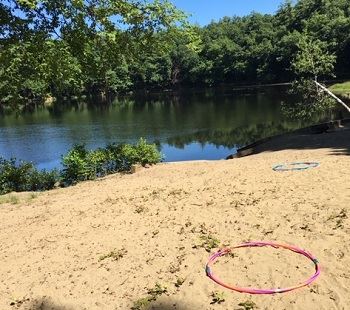PUFFERS POND HAS REOPENED FOR SWIMMING

Beach at Puffers Pond. Photo: amherstma.gov
Source: amherstma.gov
Puffers Pond has reopened for swimming as of Friday July 10, 2020.
Guidelines for visitors can be found here.
A report on the recent e.coli outbreak can be found here.
The most recent water report can be found here.
An Overview of the water report follows.
Overivew
As a much loved and widely used natural amenity, Puffer’s Pond has been, and continues to be, an integral area that helps define North Amherst. The Pond is the largest open water body in Amherst and a prominent recreation area for fishing, birding, nature walking, canoeing, picnicking and swimming. Located approximately 3 miles north of the town center, Puffer’s Pond is approximately 11 acres in size with an average depth of 5 feet and a maximum depth of more than 20 feet. The pond is also known as Factory Hollow Pond and is identified on some USGS maps by this name.
The pond’s users and uses have changed over time and today it is the centerpiece of a greenbelt conservation area that stretches from Route 63 east to the Amherst Town line bordering Shutesbury and Leverett. This riparian corridor includes the formal Mill River Recreation Area, foot trails that meander though the floodplain of the Mill River below the Pond, Puffer’s Pond, and Cushman Brook, which flows down from the hills of Shutesbury into the Pond.
The variety of landscapes found along the Mill River, especially Puffer’s Pond, are highly valued by the public. Amherst residents, students, visitors and tourists enjoy Puffer’s Pond so much that they may be ‘loving it to death.’
Most of the land within the Mill River corridor is town-owned conservation land and open to the public, with an extensive trail network that brings people into environmentally sensitive areas. Many residents and visitors now expect to use the Puffer’s Pond area free of charge and as frequently and in almost any manner they wish, creating management challenges as they contribute significantly to the area’s many environmental and ecological problems. The public may incorrectly believe that since the Mill River is a conservation area, it is ‘natural’ and therefore in satisfactory condition requiring little management or town regulations. However, as one of a few largely unregulated public ponds in the state, no action would exacerbate a variety of problems: erosion along the pond’s shore and nearby stream banks, degradation of the pond’s beach area, and decreased water quality.
Even though it is a largely unregulated public pond, citizens, volunteer committees, and Town staff have envisioned implementing a management plan at Puffer’s Pond for decades. Since its inception, Puffer’s Pond and the surrounding landscape were acquired by the Town for conservation purposes to preserve the river corridor and its important habitat from development. However, even before Amherst owned the area, it was a recreation destination, attracting hundreds of visitors per day during the summer months. The complexity of managing Puffer’s Pond is that these 2 uses, conservation and recreation, typically require different land use goals and management strategies.
Without a management plan, even the best efforts to resolve issues are just stopgap measures that do not amount to a long-term vision or achieve conservation goals. Currently, regular maintenance, safety and public outreach are coordinated without the benefit of such a plan, jeopardizing the Town’s ability to leverage funds for basic services that are crucial to maintaining (the conservation habitat of ) Puffer’s Pond.
